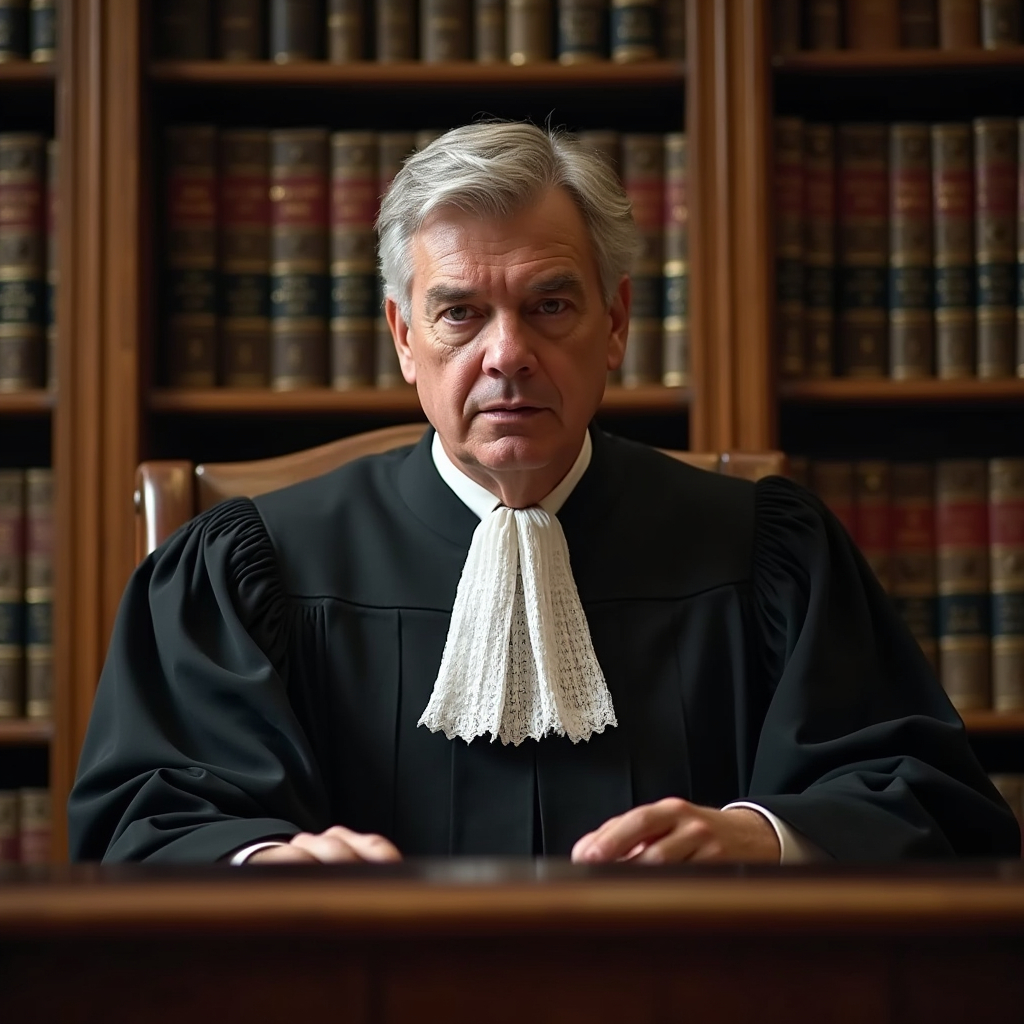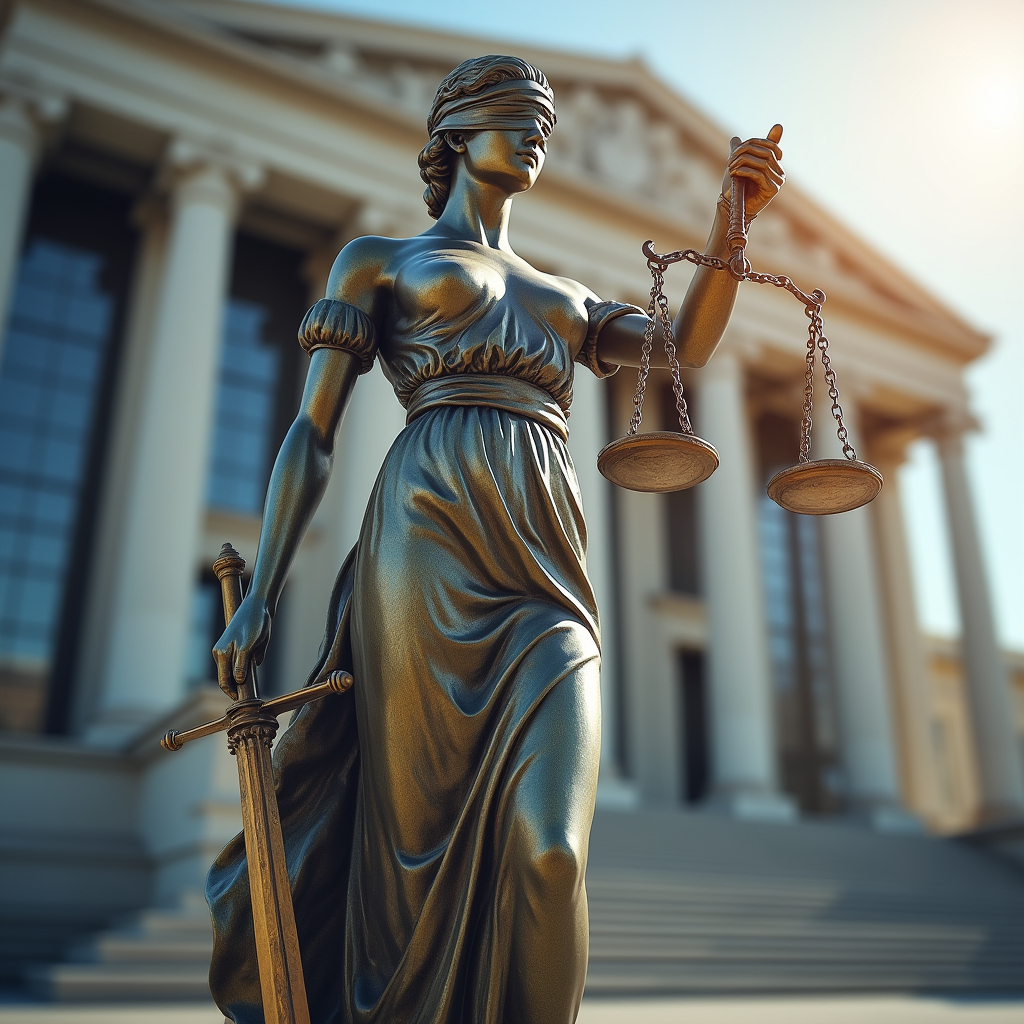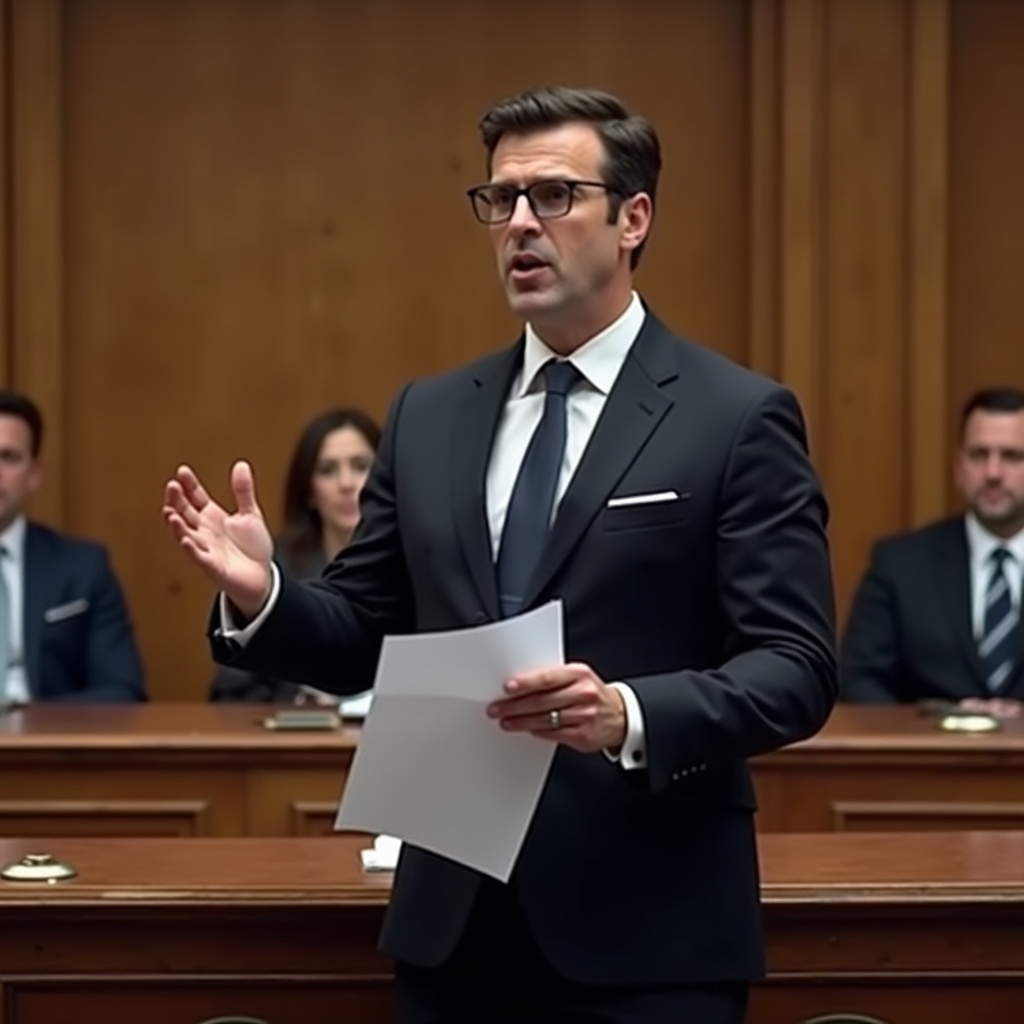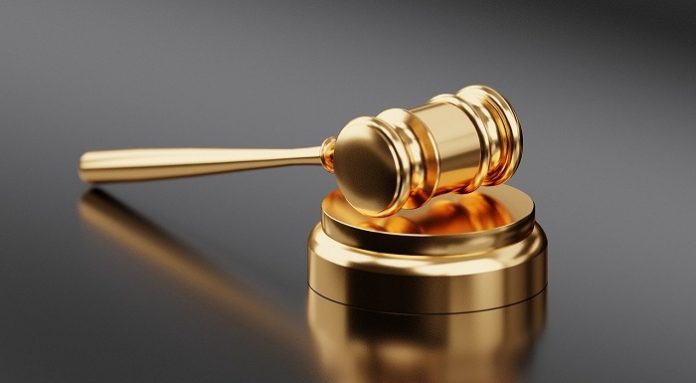This article is written by Arya Mishra and further updated by Navya Jain. The article discusses the meaning of the maxim, ubi jus ibi remedium, which has significantly shaped the law of Torts. It breaks down the various aspects and essentials of the maxim, as well its limitations. It also illustrates instances of its application.
Table of Contents
Introduction
Justice Pollock said that right and wrong are contrary to each other. If any wrong is committed, then the law provides a remedy for it. Right actions refer to those which are prescribed by moral rules, whereas wrong actions are those which are not prescribed by moral rules or which are prohibited by law. A legal right is protected by a corresponding legal duty. Any deviation from such a duty is regarded as wrong action.
In the words of Lord Justice Holt, “to imagine a right without a remedy is very difficult”. Ubi jus ibi remedium is the foundational principle for every remedy provided under the law of Torts. It exuberates the common man to have faith in the judicial system. The inherent principle behind ubi jus Ibi remedium implies that a person who has suffered any wrong, will be provided with a remedy under the due process of law. Thus, no wrongdoer can be allowed to get away with their wrong actions, without having to bear consequences for the same. Let us understand this maxim from scratch as to how it was applied in common law and how it operates in Indian jurisdiction. We shall also learn about the relevant exceptions or limitations, wherein it ceases to apply.
Meaning of ubi jus ibi remedium
The word “jus” means legal authority to do something or to demand something. The word “remedium” means that the person has the right of action in a court of law. Ubi jus ibi remedium is a Latin maxim which means that where there is a wrong, there is a remedy. The maxim is based on the premise that where a man has a right, there must be means provided to him/her to ensure proper exercise or enjoyment of such rights. It is useless to imagine and think of a right without a remedy. However, such a right must be legally recognised by the statues. For instance, there are several moral and political wrongs which are neither actionable nor pose sufficient reason to take legal action. In such a scenario, there shall be no valid basis for raising damages by the aggrieved. Thus, to say that there is a legal remedy against every wrong action may not be entirely true.
With that being said, it is only the aggrieved who may seek the remedy. It is not permissible in the law to permit another party to file for damages on behalf of the aggrieved. In other words, it is up to the parties to convince that a legal right has been breached. Once they succeed in doing so, the court shall rightfully provide a remedy for the damage. If the court is convinced of the damage caused to the aggrieved, it shall examine the legal sanctity of the remedy. Therefore, one must be cautious of seeking legally valid damages. It is appropriately said by Justice Stephen, that this maxim would be correctly stated if it were reversed to say “where there is no legal remedy, there is no legal wrong.”
In the case of Leo Feist vs. Young (1943), the plaintiff sought relief against the copyright infringement of his musical composition. The court observed that in the event where a wrong has actually occurred, and the aggrieved has approached the right forum, the court shall not commit the sin of sitting as a mute spectator. There is no such wrong action that may go unaddressed without an appropriate remedy.
Similarly, in the case of Donoghue vs. Stevenson (1932), the plaintiff sued the defendant for serving a beer bottle contaminated with a dead snail, thereby causing illness. The court stepped up in favour of the plaintiff stating that the defendant owed a duty of care to the plaintiff, which stood breached. It was much enforceable that serving infected products would cause harm to the plaintiff. Thus, the court provided remedy to the aggrieved in the form of costs levied on the defendant.

Origin of ubi jus ibi remedium
The maxim owes its origin to the common law case of Ashby vs. White, (1703), wherein the court opined that for every right vested in the plaintiff, there must also exist means to protect it. Should there be any injury or harm in exercising or enjoying the said right, there must be a remedy to rectify the same. Thus, no wrong should be allowed to go without any compensation if it can be redressed by a court of law. Similarly, the court reiterated this maxim at a very nascent stage in the case of Marbury vs. Madison (1803) as well, mandating the need to have a remedy for every wrong done to a party.

Essentials of ubi jus ibi remedium
When a party’s rights are infringed, the aggrieved has the option of resorting to a civil suit in order to claim damages. To succeed, the plaintiff must establish the constitution of a tort. Thus, some of the essential ingredients required to be fulfilled by the plaintiff are as follows:
- The maxim ubi jus ibi remedium can be applied only where a right exists and that right is recognized by the court of law;
- Existence of a wrongful act or omission: in order to hold a person liable for damages, she/he must constitute some tort, that is, violate the legal right of a person. it is not necessary that only a wrongful act towards the existent right will constitute infringement. Even omission to perform certain actions may constitute infringement. As far as a wrongful act is concerned, mere social or moral wrong will not amount to a tort. It must involve the existence of a legal duty and failure to perform that duty or unreasonable interference with the legal right. For example, let us assume that Mr. Kabir has entered Mr. Ram’s land without his permission. This would amount to trespass, making Mr. Ram entitled to seek remedy against him. However, if we consider an example that Raju saved a drowning child or Rama failed to help a starving street beggar, it would not constitute a tort. Hence, no remedy can be sought for such actions.
- There must be some legal damage: This means that a liability shall arise with respect to a person only if there is a violation of a legal right of the plaintiff. As long as there is no violation of a legal right, there is no right or even need to seek the remedy. The inherent principle behind this maxim is to bring the person back to his position before the legal damage was caused. However, where there is no damage, there is no remedy.
Sometimes, there are certain situations where the plaintiff may experience a violation of his/her legal right. However, there is no loss or harm caused per se. In such a scenario, it is the behaviour of the person that becomes actionable. This situation is known as injuria sine damnum. The other way around, there may also exist situations where the plaintiff may suffer a loss or harm, but no legal right of his has been violated in the process. This is known as damnum sine injuria.
Injuria sine damnum
The term “injuria” means injury to the legal right. ‘Damnum’ means substantial harm, loss or damage and the term ‘sine’ means without. Thus, collectively speaking, injuria sine damnum means injury caused without any damage. This legal maxim means that the plaintiff has suffered no damage, but only a legal injury. In other words, the plaintiff has not undergone a physical or mental injury, but only a legal injury in terms of infringement of his legal rights. Therefore, the plaintiff need not prove the damages, but he is required to prove that some legal injury has been caused to him by the act of the defendant. In such cases, the court generally awards the plaintiff with nominal damages. Let us examine a few cases to understand it better.
For instance, in Ashby vs. White (1703), the plaintiff was a qualified voter, but the defendant wrongfully refused to take his vote. The party to whom he wanted to vote had won the election and the plaintiff filed a suit against the defendant, stating that since he was detained from giving a vote, his right to vote was infringed. He also claimed a certain amount of compensation for the damage caused to him. The defendant stated that the party to whom he wanted to vote had won the election and therefore, no damage and injury was caused to him.In this case, the plaintiff did not suffer any physical damage. Instead, he only suffered an infringement of his legal right to vote.
In Maretti vs. William (1803) the defendant was the owner of the bank, and the plaintiff’s fund was deposited in the defendant’s bank. Despite the plaintiff having sufficient balance in his account, the defendant refused to honour his cheque. The court held that the defendant was liable for the loss caused to the plaintiff. The maxim ubi jus ibi remedium was applied as the plaintiff’s legal right was violated and the defendants were liable to pay damages.
Damnum sine injuria
Damnum sine injuria means that the plaintiff has suffered actual loss or substantial loss, but there has been no violation of any legal right. Since there is no violation of a legal right, no case shall lie against the defendant in such a scenario. Such cases generally arise as a result of the exercise of one’s legal right, clashing with the other’s legal right. Thus, these can also be regarded as moral or social wrongs, which are not actionable per se. Resultantly, no remedy shall be available against such damage.

The following are some instances of damnum sine injuria:
- Loss inflicted by one trader upon the other by competing practices.
- Damage caused by a person to defer the infliction of greater evil. For instance, Ram breaks into Radha’s house in order to save a child locked inside. Herein, although Ram has committed a tort of trespass by wrongfully entering Radha’s house, the same shall not be punishable because it has been caused to prevent greater evil.
- Where harm is too trivial or too difficult to prove.
- Where harm caused is of such nature that it is considered to be more appropriate to pursue criminal proceedings. For instance, in matters involving death or public nuisance, it is much more appropriate to initiate criminal proceedings than civil proceedings.
- There is no right of action for damages for contempt of court.
Let us also look into a few cases to better understand this maxim.
In the Gloucester Grammar School’s case, (1410) the defendant was a schoolmaster. He established a school as a rival to the plaintiff. Owing to the competition stirred in the market, the plaintiff’s school reduced their fee in order to retain their marketplace. The plaintiff filed a suit against the defendants for the same. The court utilised the principle of damnum sine injuria and opined that the defendant was not liable. Albeit the fact that the plaintiff had suffered monetarily, due to the reduction in the prices, there was no infringement of his rights. Thus, the court refused to provide a remedy to the plaintiff.
In the case of Richards vs. Richards (1859), the plaintiff was a landowner running a mill on his own land. For about six years of operation, he had been obtaining the water for his mill, from the stream nearby. One day, the defendant dug a well on his own land with the intent of supplying water to the inhabitants of the district. As a result, the stream water percolated into the well of the defendant and the plaintiff was cut off from the supply. Therefore, the plaintiff was not able to use this water for running his mill. The plaintiff sued the defendant for damages. The court held that the defendant indeed caused hardship to the plaintiff, but he was not in violation of any legal right. Thus, the court refused to award any damages to the plaintiff.
Ubi jus ibi remedium in common law
There are several cases depicting the usage of the principle in common law. For instance in the case of Airone Charters Pvt. Ltd. vs. Jetsetgo Aviation Services Pvt. Ltd., (2021) wherein the High Court of Delhi emphasised on the legal right to seek redressal. Although there may be certain bars to seek redressal such as limitation period or res judicata, nevertheless, it does not outlaw the right to seek remedy. This is a fundamental right and it cannot be compromised.
Similarly, in Anita Kushwaha vs. Pushap Sudan (2016), the court reiterated that there is a long line of decisions wherein the court has upheld that the right to access to justice or ubi jus ibi remedium is a basic human right and is recognised in all the systems and all forms of societies. It is so basic to human existence that it cannot be ignored or denied to anybody in any law.
The court has time and again iterated that the entire justice system is based on the fundamental principle of providing justice to the wronged party. Every aggrieved party has the right to approach the court as long as his legally enforceable right is remediable in law. Selvaraj v. Koodankulam Nuclear Power Plant India Limited,( 2021).
Limitations of ubi jus ibi remedium
Some of the limitations of ubi jus ibi remedium, are as follows:
- The maxim ubi jus ibi remedium does not apply to moral and political wrongs which are not actionable.
- This maxim is not applied to cases in which proper remedy is given in case of breach of right under common law.
- If there is no legal damage that has been caused to any person, this maxim will not be applicable.
- No remedies are available in case of breach of marriage vows or personal commitment, as these are promises made without consideration and are based on trust.
- This maxim is not applicable where the plaintiff is negligent or there is negligence on the part of the plaintiff.

Application of ubi jus ibi remedium in Indian jurisdiction
Sardar Amarjit Singh Kalra vs. Promod Gupta & Ors. (2002)
In S. Amarjit Singh Kalra (Dead) by L.R.s vs. Promod Gupta & Ors. (2002), the court deliberated upon a question concerning the condonation of delay in filing the application for substitution with respect to a respondent who had passed away during the pendency of the appeals. It examined whether failure to bring the legal representative on record of the deceased member in a timely manner would result in abatement of all the clubbed appeals.
The court held that it was an undeniable fact that the rights and liabilities attached to an individual are independent of each other’s existence. Death of a respondent’s rights will only affect his rights and liabilities and none of the others’. The death of a joint respondent will not bar the court from interfering or pursuing the matter.
The maxim of ubi jus ibi remedium was recognised as a basic principle of the theory or philosophy of law. The Supreme Court also held that it is the duty of the courts to protect and maintain the rights of parties and to help them instead of denying them relief.
Vishnu Datt vs. Board of High School and Intermediate Education (1980)
In the case of Vishnu Datt vs. Board of High School and Intermediate Edcuation (1980), the principal of the school misunderstood a regulation. As a result, he failed to maintain the attendance register as per the regulations of the Board, due to which the plaintiff was detained from giving the exam. Thus, the plaintiff lost a year. The plaintiff sued the principal, seeking damages for the same.
The court opined that there was no duty cast upon the principal to maintain the register. A mere fault in understanding the regulation cannot pose to be an actionable wrong. Thus, the court refused to provide a remedy against the same.
D.K. Basu vs. State of West Bengal (1996)
In D.K. Basu vs. State of West Bengal (1996), Mr. D.K. Basu, who was working as the Executive Chairman of Legal Aid Services, West Bengal (a non-political organisation registered under the Societies Registration Act, 1860), wrote a letter addressing the Chief Justice of India, telling him about certain news that was published in newspapers, namely the Indian Express and The Telegraph, regarding the death of a person in police custody.
The Supreme Court issued some guidelines that need to be followed during the arrest of an accused person. The court further said that a mere declaration of violence in police custody or judicial custody as a legal wrong was not sufficient. Referring to ubi jus ibi remedium, victims and their families should be provided with compensation in case of injury or death of the victim. The quantum of compensation should be decided considering the circumstances of the case.
Bhim Singh vs. State of J&K (1985)
In Bhim Singh vs. State of J&K (1985), the petitioner was a member of the Jammu and Kashmir Parliamentary Assembly. While he was on his way to attend the parliamentary session, he was wrongfully arrested by a police officer and he was restrained from attending the parliamentary session. Additionally, he was not presented before the Magistrate in time. He had a legal right to attend the meeting. His fundamental right under Article 21 of the Constitution was also violated. At last, the Supreme Court held that the defendants were to be held responsible for the losses he faced due to not attending the meeting, as well as for his unlawful detainment. Accordingly, he was awarded Rs.50,000, as compensation.
Shivkumar Chadha vs. Municipal Corporation of Delhi (1993)
In Shiv Kumar Chadha Etc. Etc vs. Municipal Corporation of Delhi and Ors. (1993), the court examined the question of whether the court is barred from entertaining the disputes vide Section 343 of the The Delhi Municipal Corporation Act, 1957 with respect to the orders passed for demolition of constructions made without sanctioned plans.
The Supreme Court held that where statutory enactments do not provide any remedy, but only create rights and liabilities, if any person complains of his rights being violated or wrongly affected, such a person can approach the civil court, on the basis of the principle of legislation that where there is a right, there is a remedy.

C. Veera Thevar vs. The Secretary To Government (2010)
The case of C.Veera Thevar vs. The Secretary To Government,(2010) dealt with the abuse of powers by police officers against two villagers one of them being, sexual abuse against a female. The petitioner had filed a writ petition before the court to restrain the defendant from initiating any criminal prosecution.
The court held that there is no wrong without a remedy. The laws say that in every case where a person is wronged, injury should be provided. Mere declaration of an action as invalid or recognising death in lockup, custodial violence, etc., does not provide any remedy to a person whose fundamental right to life has been violated. More tangible actions are required. Hence, the petitions were dismissed.
Conclusion
From an in-depth analysis of the maxim, ubi jus ibi remedium, we understand that the intent behind the formulation of this principle was not just namesake. When a person whose rights are violated approaches the court, she/he expects justice. This is where this maxim comes into play. Rather than keeping their hands tied, it empowers the court to provide justice. With that being said, it is crucial for the court to first examine and identify the infringement of a legal right, because not every wrong ought to be remedied. The court has very aptly opined in the case of Shiv Shanker Dal Mills Etc. Etc vs. State Of Haryana & Ors, (1979) that the primary objective of courts is to ensure that justice is given to those who are wronged, which is fulfilled by this maxim.
Frequently Asked Questions (FAQs)
Which Article of the Constitution of India represents ubi jus ibi remedium?
This legal maxim is represented by Article 226 and Article 32 of the Constitution of India. These provisions allow one to approach the High Courts or the Supreme Court, in case of a violation of any of their rights, in order to make sure the same is enforced.
In which case was the maxim of ubi jus ibi remedium first opined?
The maxim of ubi jus ibi remedium was first recognised in the case of Ashby vs. White (1703)
References
- https://papers.ssrn.com/sol3/papers.cfm?abstract_id=564302
- https://www.researchgate.net/publication/228305708_The_Myth_of_Ashby_v_White
- https://www.jlsrjournal.in/case-comment-gloucester-grammar-schools-case-by-saman-nadeem/#google_vignette
- https://www.ijsr.net/archive/v11i5/SR22516142410.pdf
 Serato DJ Crack 2025Serato DJ PRO Crack
Serato DJ Crack 2025Serato DJ PRO Crack










 Allow notifications
Allow notifications




[…] is a well-settled doctrine of “Ubi jus ibi remedium”. “Means where there is a right, there is a remedy”. This doctrine is also applicable to […]
[…] is a well-settled doctrine of “ubi jus ibi remedium”. “Means where there is a right, there is a remedy”. This doctrine is also applicable in […]